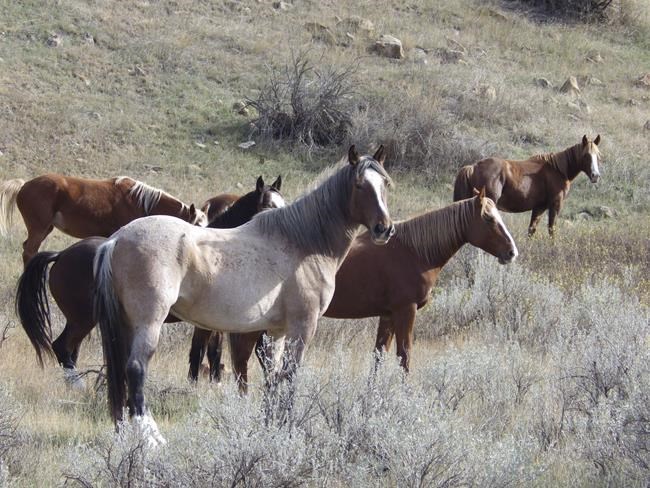BISMARCK, N.D. (AP) — Wild horses will stay in North Dakota's Theodore Roosevelt National Park amid fears from advocates that park officials would remove the beloved animals from the rugged Badlands landscape, a key lawmaker said Thursday.
Republican U.S. Sen. John Hoeven said he has secured a commitment from the National Park Service to maintain His office said the Park Service will abandon its proposed removal of the horses under an environmental review process begun in 2022.
“This will allow for a healthy herd of wild horses to be maintained at the park, managed in a way to support genetic diversity among the herd and preserve the park’s natural resources,” Hoeven’s office said in a statement.
Park visitors, much to their delight, often encounter the horses while driving or hiking in the rolling, colorful Badlands where a young, future hunted and ranched in the 1880s.
The horses roam the park’s South Unit near the Western tourist town of Medora. In 2022, park officials began the process for the horses as well as about nine longhorn cattle in the park’s North Unit near Watford City. Park officials have said that process aligned with policies to remove non-native species when they pose a potential risk to resources.
“The horse herd in the South Unit, particularly at higher herd sizes, has the potential to damage fences used for wildlife management, trample or overgraze vegetation used by native wildlife species, contribute to erosion and soil-related impacts ... and compete for food and water resources,” according to a Park Service environmental assessment from September 2023.
removing the horses quickly or gradually or taking no action. Park Superintendent Angie Richman has said the horses, even if they ultimately stay, would still have to be reduced to 35-60 animals under a 1978 environmental assessment. It wasn’t immediately clear how Hoeven’s announcement affects the future number of horses or the longhorns.
Thousands of people made public comments during the Park Service review, the vast majority of them in support of keeping the horses. North Dakota’s Republican-controlled Legislature made its support official in a resolution last year. Gov. Doug Burgum offered state help to maintain the horses.
Hoeven's announcement comes after Congress passed and President Joe Biden recently signed an appropriations bill strongly recommending the Park Service maintain the horses. The legislation signaled that funding to remove the horses might be denied.
The horses descend from those of Native American tribes and area ranches and from domestic stallions introduced to the park in the late 20th century, according to Castle McLaughlin, who researched the horses as a graduate student while working for the Park Service in North Dakota in the 1980s.
Jack Dura, The Associated Press




